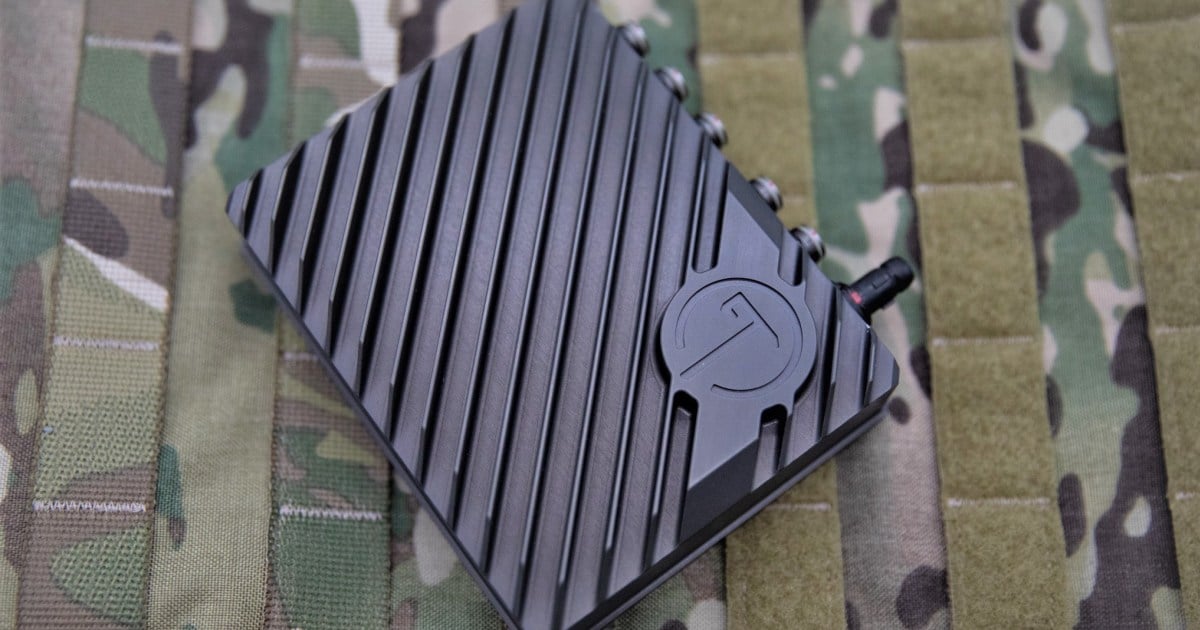Earlier this year, at the enormous, annual Hannover Messe industrial technology gathering in Germany, the Linux Foundation launched their latest open source project, EdgeX Foundry, whose mission is to simplify and advance Industrial IoT initiatives by building a common open framework for edge connectivity and computing.
While it is a well-known fact that the Linux Foundation is the global leader in establishing and scaling open source communities, it was still surprising to learn that the day the project was launched, there were already over fifty members signed up and actively engaging with each other, a movement likely triggered by another well-known fact: IoT is hard.
The impetus for establishing EdgeX Foundry came out of an existing project underway within Dell, an even more massive tech giant after combining forces with EMC, in an acquisition which closed in September 2016, creating a thundercloud of technologies and businesses including VMware, Boomi, Pivotal, RSA, SecureWorks, and Virtustream. Given this array of IoT- enabling technologies, the IoT is a rich growth market for the company.
Dell’s Project FUSE was a natural outgrowth of the company’s early work in creating IoT gateways and related software. Naturally, connected devices need to talk to applications, and those devices need to be secured and managed, and the applications made valuable by those devices need a means to capture and analyze data to make it actionable at the edge and available in the cloud for more distributed business solutions.
The FUSE project was started in July 2015 to create a highly extensible, platform independent architecture that would make it easier for users to build IoT edge solutions. The goal was to make it simple to scale up and down functionality for collecting, moving and storing data, supporting “closed loop” control where necessary, performing local analytics for real time response, and in general smoothing out the complications associated with provisioning, managing, and securing distributed devices at the edge.
The impetus for the project came when Jason Shepherd, director of IoT strategy and partnerships for Dell, had a major “aha moment” after being on the road meeting with multiple ecosystem partners, as well as enterprise customers.
“I was in my car, driving from meeting to meeting, when it occurred to me that the proliferation of hundreds of IoT platforms was not sustainable and confusion about IoT was only going to get worse,” Shepherd said. “I called it the Magical Mystery Tour, because there were so many unanswered questions and we had yet to come across an edge platform that we felt was flexible enough to meet the diverse needs of IoT stakeholders. So, I called up our head of software architecture in the Office of the CTO and asked ‘if I can get some funding, what if we tried this’?” This led to the initial = development of the FUSE project, codenamed internally due to the goal of ‘fusing’ together an ecosystem.
So, Shepherd and the CTO team including lead architect Jim White set off to explore an open and inclusive vision for creating a “greatest hits reel” IIoT edge platform architecture. “Throughout the development process we recognized that no single company would be able to solve for every challenge, particularly given the fragmentation across the industrial IoT landscape resulting in endless combinations of hardware, messaging protocols, operating systems, coding environments and applications.” As such, he and the development team worked extensively with partners and end customers to create a core framework that would enable heterogeneous technologies to interoperate efficiently at the edge. In effect, build Cloud Foundry for the edge.
“At first we thought this could be the foundation for an open Dell-owned platform offering but after a few months of in-depth conversations, workshops, and further study of the IIoT industry, we decided it didn’t make sense for us to become the 407th IoT platform trying to attract a user base,” Shepherd said. “Dell’s culture has always been based on openness and customer choice, which is why we immediately got a lot of support to go the open source route. But to make a truly scalable open source framework and associated community meaningful and successful, we needed to find the right partner. After taking a look at many options, we decided to go with the Linux Foundation and invite private companies, standards bodies and consortia, and other open source communities to align with us.”
When it comes to the project name, Shepherd explains “as a community we wanted to pay homage to Cloud Foundry and one of the incubation projects that merged with us was named ‘IoTX’ so it kind of just came together. The ‘X’ also represents data being exchanged in all directions which is typical of an IoT edge solution.”
It’s never easy to figure out how to make money in open source, given that open is by its nature “free” however many companies have done so, including Red Hat, one of Linux’s great success stories. The logic of open source is to provide enough shared code constituting a common framework and context to reduce the friction and expense required to build everything from scratch. There are nuances to competition that arise when multiple middleware vendors, for example, join forces within open source communities like EdgeX Foundry, given that those middleware vendors make their living by helping resolve fragmented protocol standards to enable systems to talk to each other.
“Open source leads to a meritocracy effect, meaning may the best technologies and combination of technologies win,” Shepherd said. “Besides, open source doesn’t really mean free – there are plenty of opportunities to monetize the code, whether it be offering commercially-supported versions of the open interoperability core or selling value-added plug ins for functionality such as edge analytics, database, security and system management. At Dell we see EdgeX as a way to scale our infrastructure offering including hardware and security and system management tools in addition to monetizing solutions together with our partners.
When asked why he thought so many companies – from very small start-ups to other large enterprises – climbed on board the EdgeX Foundry project at launch, Shepherd said, “EdgeX is architected to enable commercial value-add to be plugged into an open interoperability core. This is compared to various other IoT-focused open source projects that may be built for developers but not to drive an ecosystem. We are all very passionate about the IoT and the potential it has to make business and life better. Finally, beyond the obvious technological benefits, we found that inbound members were very enthusiastic about the opportunity to meet each other, learn about each other’s technologies, and collaborate in ways that set the stage for success at scale. This goes back to the power of EdgeX in driving an ecosystem.”
The timing was also right, according to Philip DesAutels, Executive Director of the EdgeX Foundry project. “We cannot get to the billions of dollars of commercialization available if our community doesn’t begin to work more in concert together,” DesAutels said. “The EdgeX framework supports interoperable components that will reduce uncertainty and allow every member, whether they are part of a small company or massive global enterprise to scale faster.”
Connectivity standards for IoT have been especially challenging at the edge, where a multitude of devices, in both brownfield and greenfield applications, are connecting via multitude communication protocols – BACnet, Modbus, Bluetooth, Zigbee and MQTT to name just a fraction of the possibilities. As Shepherd explains, “Nobody wins by reinventing the basics for connectivity and security over and over again using the same standards – the value is in the infrastructure, applications and services. And as devices proliferate the need for commonality in connecting, securing and managing them on the network increases exponentially”.
“Security is required along every point in the chain,” DesAutels said, “and security is best served when we have standards in place, and a common understanding of what enterprises truly need to move with full steam into IIoT. EdgeX Foundry will give enterprises choices but within a logical and open context.”
Today, Shepherd, DesAutels, their teams and the growing membership of EdgeX Foundry are aggressively building the open source code library and documentation. Dell has contributed its FUSE code which is already being used by developers in the community, and other members are lined up to contribute.
These are just a few examples of how Dell’s FUSE project evolved into Linux Foundation’s EdgeX Foundry, opening opportunities for ecosystem partners to work more freely and openly with each other to solve for the challenges at the very edge of the network.
“When we started on this path, we had no idea how quickly we would be able to attract members, and how quickly and enthusiastically those members would step up,” Shepherd said. “At our technical workshops in Boston earlier this month, it was awesome to see the sense of urgency the members brought to the table and their creativity. We were in a commercial kitchen, with some of the greatest IoT chefs in the world – with ingredients and recipes that help all of us serve up a ton of value to enterprises ready to scale up.”
Edited by
Ken Briodagh





